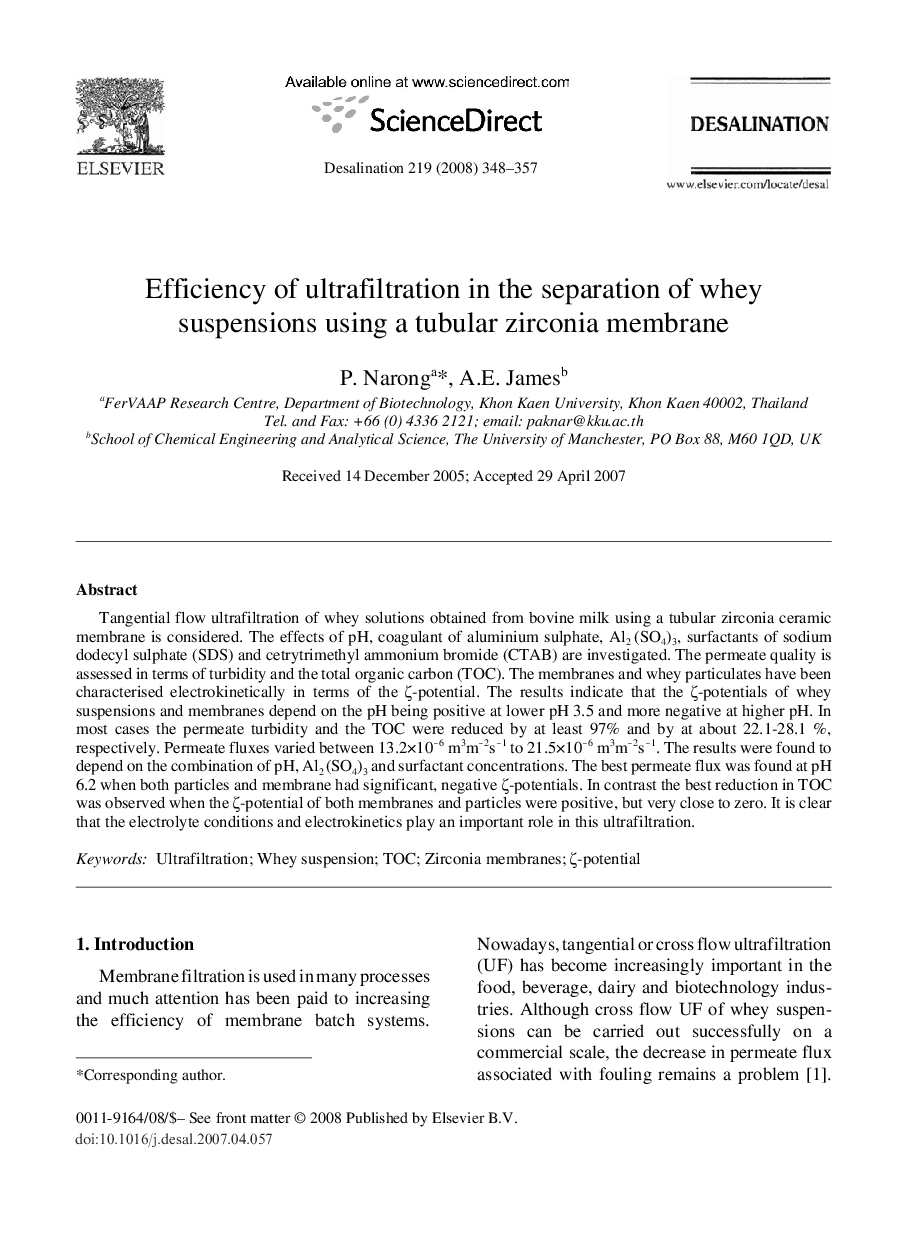| Article ID | Journal | Published Year | Pages | File Type |
|---|---|---|---|---|
| 627806 | Desalination | 2008 | 10 Pages |
Tangential flow ultrafiltration of whey solutions obtained from bovine milk using a tubular zirconia ceramic membrane is considered. The effects of pH, coagulant of aluminium sulphate, Al2 (SO4)3, surfactants of sodium dodecyl sulphate (SDS) and cetrytrimethyl ammonium bromide (CTAB) are investigated. The permeate quality is assessed in terms of turbidity and the total organic carbon (TOC). The membranes and whey particulates have been characterised electrokinetically in terms of the ζ-potential. The results indicate that the ζ-potentials of whey suspensions and membranes depend on the pH being positive at lower pH 3.5 and more negative at higher pH. In most cases the permeate turbidity and the TOC were reduced by at least 97% and by at about 22.1-28.1 %, respectively. Permeate fluxes varied between 13.2×10− 6 m3m− 2s− 1 to 21.5×10− 6 m3m− 2s− 1. The results were found to depend on the combination of pH, Al2 (SO4)3 and surfactant concentrations. The best permeate flux was found at pH 6.2 when both particles and membrane had significant, negative ζ-potentials. In contrast the best reduction in TOC was observed when the ζ-potential of both membranes and particles were positive, but very close to zero. It is clear that the electrolyte conditions and electrokinetics play an important role in this ultrafiltration.
